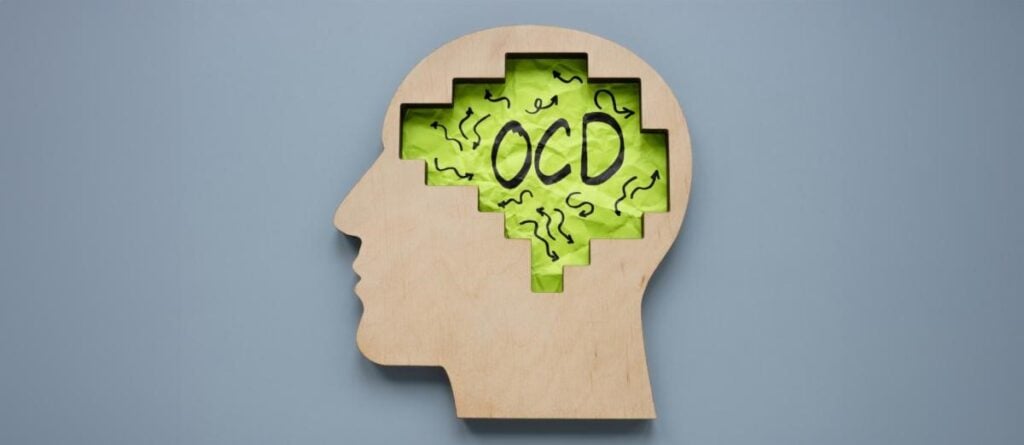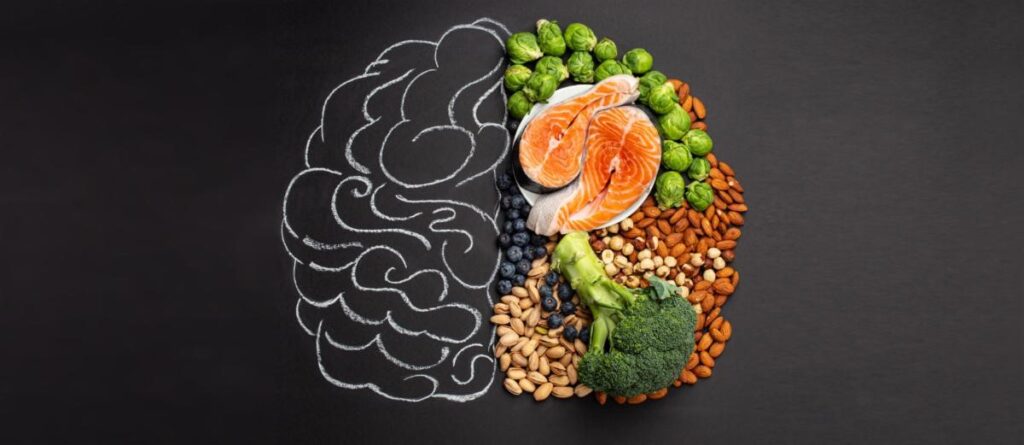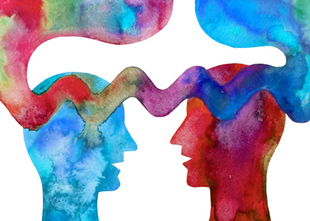

By: Laurie Little, PsyD
Chief Patient Experience Officer and Staff Psychologist,
Lindner Center of HOPE
In recent years, there has been a growing interest in exploring alternative and innovative treatments for mental illness. Among these novel approaches, ketamine has emerged as a promising treatment for various mental health disorders. Traditionally known as an anesthetic and pain-relieving medication, ketamine has shown potential in treating mental health disorders such as depression and anxiety.
History of Ketamine
Ketamine was originally discovered by chemist Calvin Stevens in 1962 for Parke Davis Company and was Food & Drug Administration (FDA)- approved for medical use as an analgesic and anesthetic in 1970. It is considered a “Dissociative Anesthetic” with different dosages leading to differing effects. Lower dosages can lead to a psychedelic experience and higher dosages can lead to complete dissociation or analgesia. When using Ketamine as an analgesic, researchers noticed an intriguing off-label effect: a rapid and pronounced improvement in mood and depressive symptoms in some patients. This discovery sparked interest in exploring ketamine’s potential as a novel treatment for mental health disorders.
To curb its illicit and recreational use, the United States categorized Ketamine as a Schedule III federally controlled substance in 1999, however research into its mental health benefits continued to flourish. In 2019, the FDA approved the first ketamine derived therapy, called Esketamine, as a therapy for treatment-resistant depression.
Ketamine and Depression
Ketamine’s antidepressant effects are unique compared to traditional antidepressant medications, which typically take several weeks to produce noticeable results. Ketamine often provides immediate relief to patients who are suffering. Ketamine promotes the release of Glutamate, an essential neurotransmitter that is related to cognition, memory and mood. Traditional antidepressants often affect neurotransmitters such as Serotonin and Dopamine and take longer to notice an improvement in symptoms.
A recently published large, systematic review of published journal articles on Ketamine treatment found “support for robust, rapid and transient antidepressant and anti-suicidal effects of ketamine. Evidence for other indications is less robust but suggests similarly positive and short-lived effects.“ The findings suggest that ketamine facilitates rapid improvements in symptoms among patients with major depressive disorder (MDD), bipolar disorder and suicidality, lasting up to 7-14 days after treatment. In some cases, effects last up to four weeks, depending on the number of ketamine sessions and the underlying mental health conditions.
There is also preliminary but growing evidence base supporting the efficacy of ketamine therapy for substance use disorders, anxiety disorders (generalized, social, OCD, PTSD) and eating disorders. However, just like its antidepressant effects, ketamine’s reductions in anxiety are also short-lived, and symptom recurrence is common after several weeks.
Patients who receive adjunctive psychotherapy appear to achieve the most long-lasting benefit compared with ketamine administration alone.
Ketamine Assisted Psychotherapy
Research shows that Ketamine is most beneficial when it is combined with psychotherapy. There is no current standard for how therapy and Ketamine should be combined. Some practitioners combine lower doses of Ketamine and engage in therapy during the treatment. Other practitioners use higher doses of Ketamine and have the patient engage in therapy either the following day or later in the week. Since patients notice an immediate improvement in their mood, they are more able to benefit from therapy and are more open and receptive to thinking about their current circumstances in a new, helpful way.
The Benefits and Challenges of Ketamine Treatment
The most notable benefit of ketamine treatment is its rapid and profound antidepressant effect. Unlike traditional medications, ketamine can provide relief within hours. This immediate response is particularly crucial for patients in crisis, who are suicidal or those struggling with treatment-resistant mental health conditions.
Moreover, ketamine treatment may benefit individuals who cannot tolerate or have not responded well to other standard treatments. Unfortunately, a significant percentage of patients do not find relief from standard therapies and it is important to have multiple treatment options available.
However, ketamine treatment does come with its challenges and risks.
- Long-Term Data. One major obstacle is the lack of long-term data on the safety and efficacy of ketamine as a mental health treatment. While research has shown short-term benefits, the question of how long the benefits last requires additional investigation.
- Misuse. Due to its powerful impact, Ketamine is also often misused. Research is still needed on the abuse potential of Ketamine. Interestingly, there is some evidence to suggest that Ketamine itself can be effective in the treatment of other substance use disorders such as alcohol and heroin. There is still much more to be learned
- Insurance Coverage. Ketamine treatment is often not covered by insurance for mental health conditions, making it financially inaccessible for many patients. The cost of treatment, coupled with the need for repeated administrations to maintain benefits, raises concerns about equitable access to this innovative therapy.
Ketamine treatment represents a groundbreaking shift in the approach to mental health treatment. Its rapid and transformative effects on depression, anxiety and other mental health conditions have sparked hope for those who have exhausted conventional therapies. While ketamine shows immense promise, ongoing research is needed to fully understand its long-term safety and efficacy.
As the field of mental health continues to evolve, ketamine treatment has the potential to offer a lifeline to those who struggle with treatment-resistant conditions. It is crucial for the medical community, researchers, clinicians, policymakers, and insurers to collaborate in ensuring equitable access to this promising therapy.
Ketamine Therapy & Treatment in Cincinnati
If you’re seeking Ketamine Therapy in Cincinnati, the Lindner Center of HOPE is an excellent place to begin your mental health care journey. Reach out to explore your available options.
References
Banoff, MD, Young, JR, Dunn, T and Szabo, T. (2020). Efficacy and safety of ketamine in the management of anxiety and anxiety spectrum disorders: A review of the literature. CNS spectrums, 25(3), 331-342.
Berman, R. M., Cappiello, A., Anand, A., Oren, D. A., Heninger, R., Charney, D. S., & Krystal, J. H. (2000). Antidepressant effects of ketamine in depressed patients. Biological Psychiatry, 47(4), 351-354.
Feder, A., Rutter, S. B., Schiller, D., & Charney, D. S. (2020). The emergence of ketamine as a novel treatment for posttraumatic stress disorder. Advances in Pharmacology, 89, 261-286.
Krupitsky, E. M., & Grinenko, A. Y. (1997). Ketamine psychedelic therapy (KPT): A review of the results of ten years of research. Journal of Psychoactive Drugs, 29(2), 165-183.
Mia, M. (2021) Glutamate: The Master Neurotransmitter and Its Implications in Chronic Stress and Mood Disorders. Front Hum Neurosci. 15: 722323.
Murrough JW, Iosifescu DV, Chang LC, Al Jurdi RK, Green CE, Perez AM, Iqbal S, Pillemer S, Foulkes A, Shah A, Charney DS, Mathew SJ. (2013). Antidepressant efficacy of ketamine in treatment-resistant major depression: a two-site randomized controlled trial. Am J Psychiatry. 2013 Oct;170(10):1134-42. doi: 10.1176/appi.ajp.2013.13030392. PMID: 23982301; PMCID: PMC3992936.
Chadi G. Abdallah and Lynnette A. Averil
Ragnhildstveit, A., Roscoe, J., Bass, L., Averill, C., Abdallah, C. and Averillhe, L.. (2023). Potential of Ketamine for Posttraumatic Stress Disorder: A Review of Clinical Evidence. Ther Adv Psychopharmacol, Vol. 13: 1–22, DOI: 10.1177/.
Reznikov L. R., Fadel J. R., Reagan L. P. (2011). “Glutamate-mediated neuroplasticity deficits in mood disorders,” in Neuroplasticity, eds Costa e Silva J. A., Macher J. P., Olié J. P. (Tarporley: Springer; ), 13–26. 10.1007/978-1-908517-18-0_2
Walsh, Z., Mollaahmetoglu, O., Rootman, J., Golsof, S., Keeler, J., Marsh, B., Nutt, D., and Morgan, C. (2022). Ketamine for the treatment of mental health and substance use disorders: comprehensive systematic review. BJPsych Open (2022) 8, e19, 1–12. doi: 10.1192/bjo.2021.1061
Witt K, Potts J, Hubers A, et al. Ketamine for suicidal ideation in adults with psychiatric disorders: A systematic review and meta-analysis of treatment trials. Australian & New Zealand Journal of Psychiatry. 2020;54(1):29-45. doi:10.1177/0004867419883341
Wolfson, P., & Hartelius, G. (Eds.). (2016). The ketamine papers: Science, therapy, and transformation. Multidisciplinary Association for Psychedelic Studies.
Zarate, C. A., Singh, J. B., Carlson, P. J., Brutsche, N. E., Ameli, R.,
Luckenbaugh, D. A., … & Manji, H. K. (2006). A randomized trial of an N-methyl-D-aspartate antagonist in treatment-resistant major depression. Archives of General Psychiatry, 63(8), 856-864.
 By Jennifer Farley, PsyD
By Jennifer Farley, PsyD















